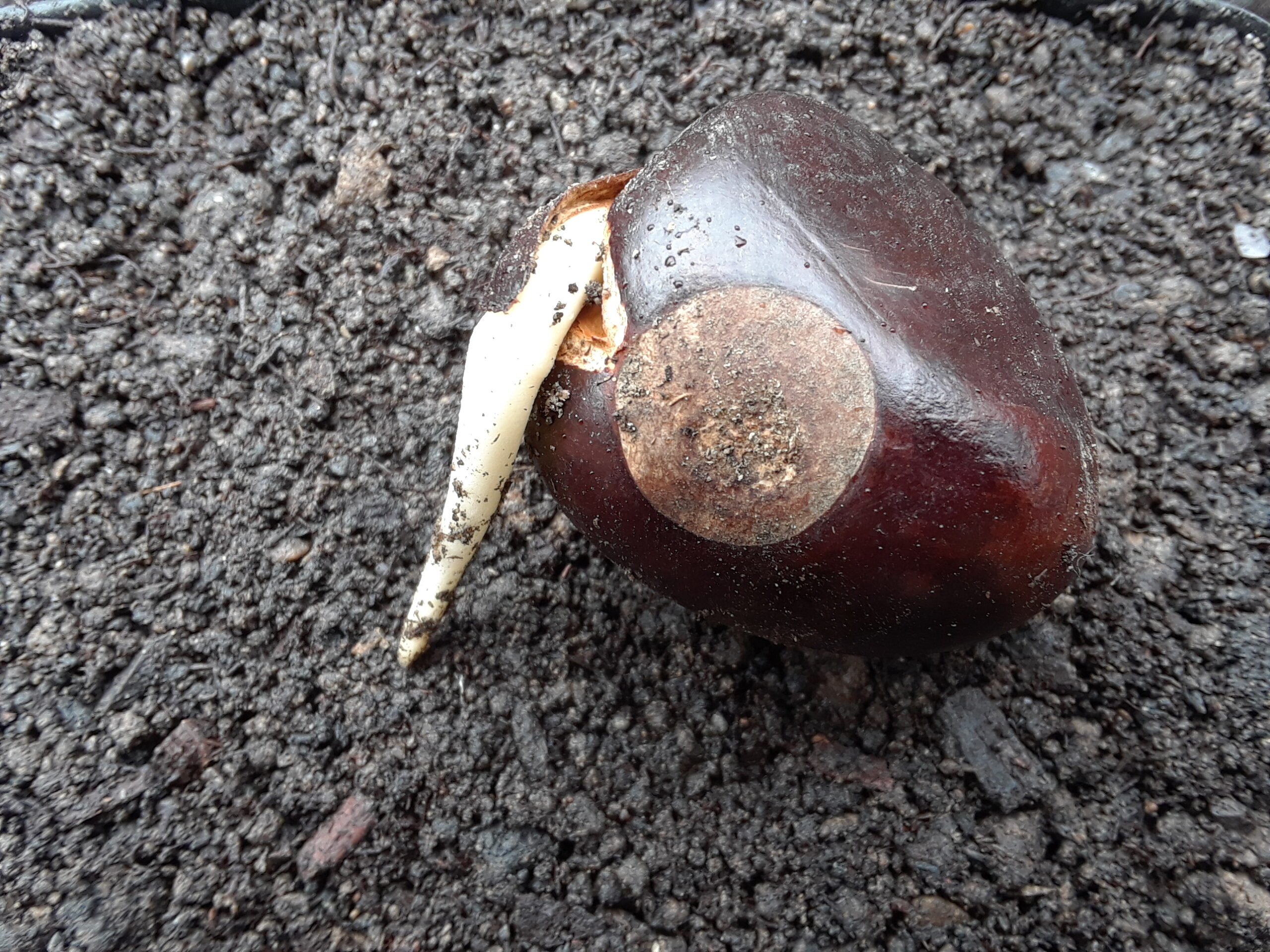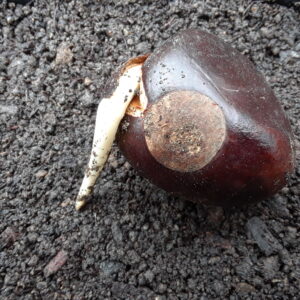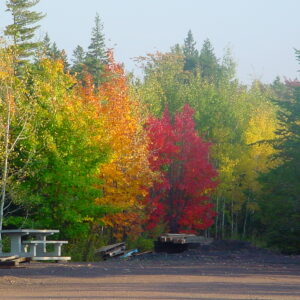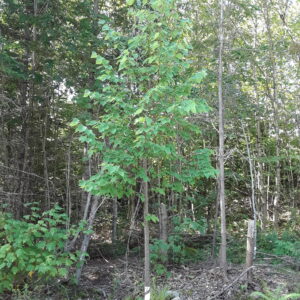Yellow Buckeye
Aesculus Flava/Octandra
A beautiful, ornamental, shade tree native to eastern USA. Comparable, if not superior, to the Common Horsechestnut for its elegance but strangely always overlooked for planting in New Brunswick. Exceptional flower display in late spring with erect clusters of yellow flowers over 6 inches tall. Huge buds unfurl attractive leaves that are large and palmately compound in form turning orange in fall. Fruits ripen in fall releasing up to 2 inch diameter shiny, brown seeds marked with a spot that resembles a buck’s eye – hence the name. Insect pollinated flowers contain both male and female parts and provide a source of nectar for bees and hummingbirds. Not susceptible to leaf scorch like the Horsechestnut. Tricky to transplant due to a strong taproot.
Additional information
| Foliage | Deciduous |
|---|---|
| Locale | Native to North America |
| Height | Large (60-100ft) |
| Width | Moderate |
| Form | Oval |
| Growth Rate | Moderate |
| Longevity | Long (over 100 years) |
| Hardiness Zones * | 4, 5 |
| Sun Exposure | Full Sun (over 6 hrs), Partial Sun (4 to 6 hrs) |
| Soil Preferences * | Moist, Slightly Acidic, Well Draining |
| Soil Tolerances | Slightly Alkaline, Wet |
| Other Tolerances | Occasional Flooding, Road Salt, Urban Pollution |
| Ornamental Interest | Buds, Flowers (attractive), Leaves (colour), Seeds |
| Wildlife Value | Bees (flowers), Hummingbirds (flowers), Insect Pollinators (flowers), Small Mammals (fruits/seeds) |
| Human Value | Carpentry (wood) |
| Seed Collection | Ordered Online |
| Planting Considerations | Casts Deep Shade, Messy Seed Litter, Tricky to Transplant |























